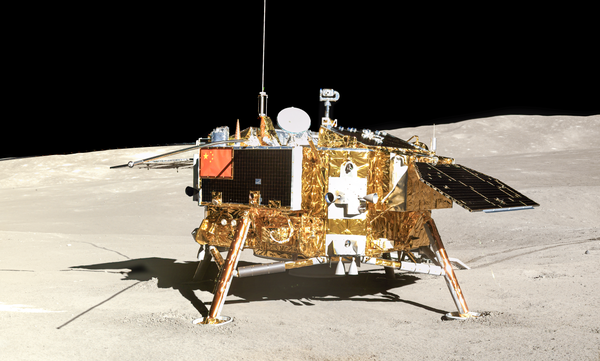
crs223
Members-
Posts
711 -
Joined
-
Last visited
-
Days Won
2
crs223 last won the day on June 19 2023
crs223 had the most liked content!
Recent Profile Visitors
The recent visitors block is disabled and is not being shown to other users.
crs223's Achievements
-
BRK diluted this year to buy the rest of BHE. Does this mean Buffett thinks shares are trading above intrinsic value?
-
IIRC last year at the meeting Greg put California/Oregon on notice: if BHE were not treated fairly, there would be no increase in capacity and power would just be cut off (during wind events). My point being: it was not just Buffett with the “bad attitude”.
-
BABA could not get enough USD to perform buybacks last year... so they issued convertible bonds denominated in USD to fund the buybacks.
-
According to ChatGPT, this would not be a viable option to return capital to shareholders: Alibaba wants to return more USD to shareholders via buybacks and dividends on the NYSE but it was run out of USD. Can Alibaba bypass CCP capital controls and simply exchange their CNY to CNH and then to USD? Alibaba, like other Chinese companies, faces strict capital controls imposed by the Chinese government, which regulate the conversion and outflow of renminbi (RMB) into foreign currencies like USD. Here's why the approach you suggested—converting CNY to CNH and then to USD—would not be a simple workaround: CNY vs. CNH: CNY (onshore renminbi) is subject to strict regulatory oversight by the People's Bank of China (PBOC) and the State Administration of Foreign Exchange (SAFE), while CNH (offshore renminbi) is traded more freely in markets like Hong Kong. However, converting large amounts of CNY to CNH is still monitored and restricted. Capital Controls on CNY-CNH Conversions: Even though CNH is more freely traded, the ability of a Chinese company like Alibaba to convert onshore CNY to CNH is not unlimited. The Chinese government carefully monitors and restricts large conversions to prevent capital flight. USD Liquidity Constraints in Offshore Markets: While CNH can be converted to USD in offshore markets, it would still require sufficient USD liquidity. If Alibaba attempted to do this at scale, authorities would likely intervene. Regulatory Oversight: Given Alibaba’s prominence, any large-scale attempt to bypass capital controls would likely attract regulatory scrutiny, leading to potential penalties or restrictions on future transactions.
-
They'll let the foreign capital in... but will they let it out when it comes time to pay dividends or sell your shares? My understanding is that CCP permission is needed to exchange Yuan for USD. Also: will they allow BABA to pay dividends and/or make buybacks on the NYSE in USD? Or will BABA have to continue issuing convertible bonds (denominated in USD) to fund the share buybacks (a paradox... presumably because CCP blocking exchange of Yuan for USD).
-
They lost all the older good workers during COVID. They tout their backlog as as asset... but it's really a manifestation that they cannot hire any good employees (IMHO). One thing they do have: US will want to compete with this: https://www.csis.org/analysis/threat-chinas-shipbuilding-empire
-
I prefer the paper/mail subscription. With the flip of a page, i’m looking at the next company… working in the spirit of Buffet: “Start with the A’s”
-
Who was reporting $6M? Liars!
-
I Need a Laugh. Tell me a Joke. Keep em PC.
crs223 replied to doughishere's topic in General Discussion
This is hilarious! I would like to see this done in other countries too e.g. Zelensky, Biden, Trump, etc. In California, the DMV has a picture of our Governor hanging on the wall… if i were governor i would not want my picture there… sort of like putting your giant mug on the tax bill! -
What is China going to do with 500X shipbuilding capacity? What will China do with all their nuclear warheads?
-
Wow. At first I thought “this sounds similar to US corporate platitudes on DEI”. But it’s worse. From ChatGPT: The Chinese principles of the “Two Affirmations” (两个确立, Liǎng gè Quèlì) and the “Two Upholds” (两个维护, Liǎng gè Wéihù) are central ideological directives introduced during Xi Jinping’s leadership in the Chinese Communist Party (CCP). These principles emphasize loyalty to the party's core leadership and reinforce its authority. Two Affirmations (两个确立) The "Two Affirmations" were solidified during the Sixth Plenary Session of the 19th Central Committee of the CCPin 2021. They affirm: The establishment of Xi Jinping’s core position within the Central Committee and the Party. The establishment of Xi Jinping Thought on Socialism with Chinese Characteristics for a New Era as the guiding ideology of the CCP. These affirmations serve to elevate Xi Jinping’s leadership and ideological framework as central to the CCP's governance and China's policy direction. Two Upholds (两个维护) The "Two Upholds" require party members and institutions to: Uphold the authority of the Central Committee of the CCP. Uphold Xi Jinping’s core leadership within the CCP. This principle emphasizes unity and loyalty to the centralized leadership structure of the CCP, with Xi Jinping at its helm. Significance Together, the "Two Affirmations" and "Two Upholds" establish a framework of ideological and political loyalty to Xi Jinping and the CCP's centralized authority. These principles have been instrumental in consolidating Xi Jinping’s power and ensuring policy continuity under his leadership. They also reflect the CCP's emphasis on maintaining internal unity and control amid domestic and international challenges.
-
Should outsiders be allowed to speak about BRK or FFH on this site? Would be better if employees and customers were the only commenters.
-
I find it amusing. Anybody suggesting that the US is about to be surpassed by North Korea or Cuba would be ignored. Why? Because it’s “obvious” that North Korea sucks. Yet China garners so much passion. Why? My hypothesis: it is “not obvious” that China sucks. The facts do not speak for themselves and require supplemental naysaying. Disclaimer: I am not a psychologist and I do not know what I’m talking about.
-
Do you plan to continue holding Berkshire once Buffett is gone?
crs223 replied to Milu's topic in Berkshire Hathaway
Being able to move in and out of positions on a daily basis makes decisions harder, not easier! -
According to ChatGPT, these are common: Here is a list of large-scale military exercises that have taken place in Asia over the past 20 years (from around 2004 to 2024). These exercises often involve thousands of troops, advanced military hardware, and international collaboration. The list covers major exercises involving countries across Asia, as well as joint exercises between Asian nations and extra-regional powers: 1. Vostok Series (Russia) Timeframe: 2010, 2014, 2018, 2022 Participants: Russia, China, India, Mongolia, Belarus, and other countries (varies by year) Scale: Tens of thousands of troops Details: These are among the largest military exercises held in the Eastern Military District of Russia, which extends into Asia. The exercises focus on combined arms operations, live-fire drills, and international coordination. Notable Edition: Vostok 2018 involved around 300,000 troops, 1,000 aircraft, and 36,000 vehicles. It was the largest Russian military exercise since the Cold War. 2. Cobra Gold (Thailand) Timeframe: Annual (since the 1980s) Participants: Thailand, the U.S., Japan, South Korea, Indonesia, Malaysia, Singapore, and other invited countries Scale: Over 10,000 troops regularly, with larger numbers in certain years Details: Cobra Gold is the largest joint military exercise in Southeast Asia, co-hosted by Thailand and the U.S. It includes amphibious landings, live-fire drills, and humanitarian exercises. 3. Malabar (India) Timeframe: Annual (since 1992, larger scales in recent years) Participants: India, the U.S., Japan (since 2007), and Australia (since 2020) Scale: Large naval forces, carrier strike groups Details: A significant naval exercise originally between India and the U.S., it expanded to include Japan and Australia in response to growing geopolitical tensions in the Indo-Pacific. It focuses on anti-submarine warfare, carrier operations, and maritime security. 4. Joint Sea (China-Russia) Timeframe: 2012, 2015, 2017, 2019, 2021, 2023 Participants: China and Russia Scale: Large naval and air forces Details: These joint naval exercises focus on enhancing interoperability between the Chinese and Russian navies, including anti-submarine operations, surface warfare, and air defense. Exercises have occurred in the East China Sea, the Sea of Japan, and the Baltic Sea. 5. Talisman Sabre (Australia) Timeframe: Biennial (since 2005) Participants: Australia, the U.S., Japan, South Korea, New Zealand, and others Scale: Approximately 30,000 troops Details: Although held in Australia, Talisman Sabre involves many Asian nations. It focuses on amphibious landings, air combat, and large-scale multinational operations, serving as a showcase of interoperability between Asia-Pacific forces. 6. Shaheen Series (China-Pakistan) Timeframe: Annual (since 2011) Participants: China and Pakistan Scale: Large-scale air forces Details: Focused on air warfare, Shaheen exercises involve fighter jets, bombers, and support aircraft. It serves as a key element of defense cooperation between China and Pakistan, testing air combat skills and coordination. 7. Rim of the Pacific (RIMPAC) Timeframe: Biennial (since 1971, with many Asian participants) Participants: U.S., Japan, South Korea, India, Indonesia, Australia, Malaysia, the Philippines, and others Scale: The world's largest naval exercise, involving 25,000–30,000 personnel Details: Although centered in the Pacific, many Asian nations participate. RIMPAC includes large naval, air, and amphibious forces, focusing on disaster relief, maritime security, and combat training. 8. Foal Eagle (South Korea-U.S.) Timeframe: Annual (discontinued in 2019) Participants: South Korea, U.S. Scale: Up to 300,000 South Korean and 30,000 U.S. troops in some years Details: Foal Eagle was one of the largest combined field training exercises in the world, focusing on the defense of South Korea against potential aggression from North Korea. It involved ground, air, and naval forces in full-scale combat scenarios. 9. Key Resolve/Ulchi Freedom Guardian (South Korea-U.S.) Timeframe: Annual (until 2019) Participants: South Korea, U.S. Scale: Similar in size to Foal Eagle Details: These command post exercises (CPX) simulated war scenarios in the event of conflict on the Korean Peninsula. Ulchi Freedom Guardian often involved cyber warfare components and leadership simulations. 10. Zapad (Russia-Belarus) Timeframe: Biennial (latest in 2021) Participants: Russia, Belarus, and observers from China, India, Pakistan, Mongolia Scale: Approximately 200,000 troops (2021) Details: While primarily focused on Europe, Zapad 2021 had Asian components and observers, reflecting growing Russia-China military cooperation and the involvement of Central Asian partners. 11. Garuda Shield (Indonesia) Timeframe: Annual (since 2007) Participants: Indonesia, the U.S., Australia, Japan, and other ASEAN nations Scale: Over 5,000 troops Details: This exercise has grown significantly in scope, focusing on jungle warfare, humanitarian assistance, disaster response, and combined arms operations. It's one of the most important Southeast Asian military drills. 12. Peace Mission (SCO Anti-Terror Exercise) Timeframe: Biennial (since 2007) Participants: Members of the Shanghai Cooperation Organisation (China, Russia, India, Pakistan, Kazakhstan, Kyrgyzstan, Tajikistan, Uzbekistan) Scale: Over 10,000 troops Details: Focused on counter-terrorism and military cooperation, Peace Mission involves joint maneuvers, tactical operations, and counter-insurgency exercises, reflecting security concerns in Central Asia. 13. Yudh Abhyas (India-U.S.) Timeframe: Annual (since 2004) Participants: India and the U.S. Scale: Approximately 5,000 troops Details: A bilateral exercise that focuses on counter-insurgency and anti-terrorism operations, humanitarian relief, and peacekeeping missions. It involves infantry, air, and mechanized forces. 14. Shanti Path (India-Nepal) Timeframe: Annual Participants: India and Nepal Scale: Hundreds to a few thousand troops Details: This is one of several bilateral exercises between India and its neighbors, focusing on peacekeeping operations and disaster response.


.thumb.png.e9643dd797bb6bfa93083ce1311ba74d.png)
